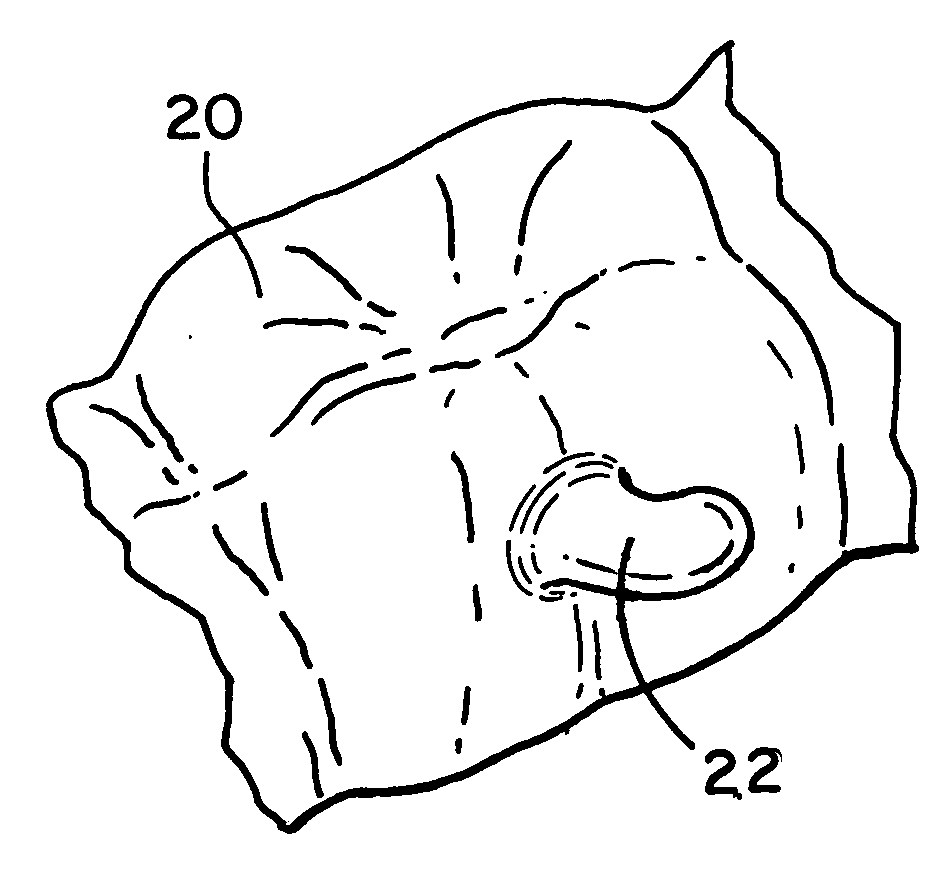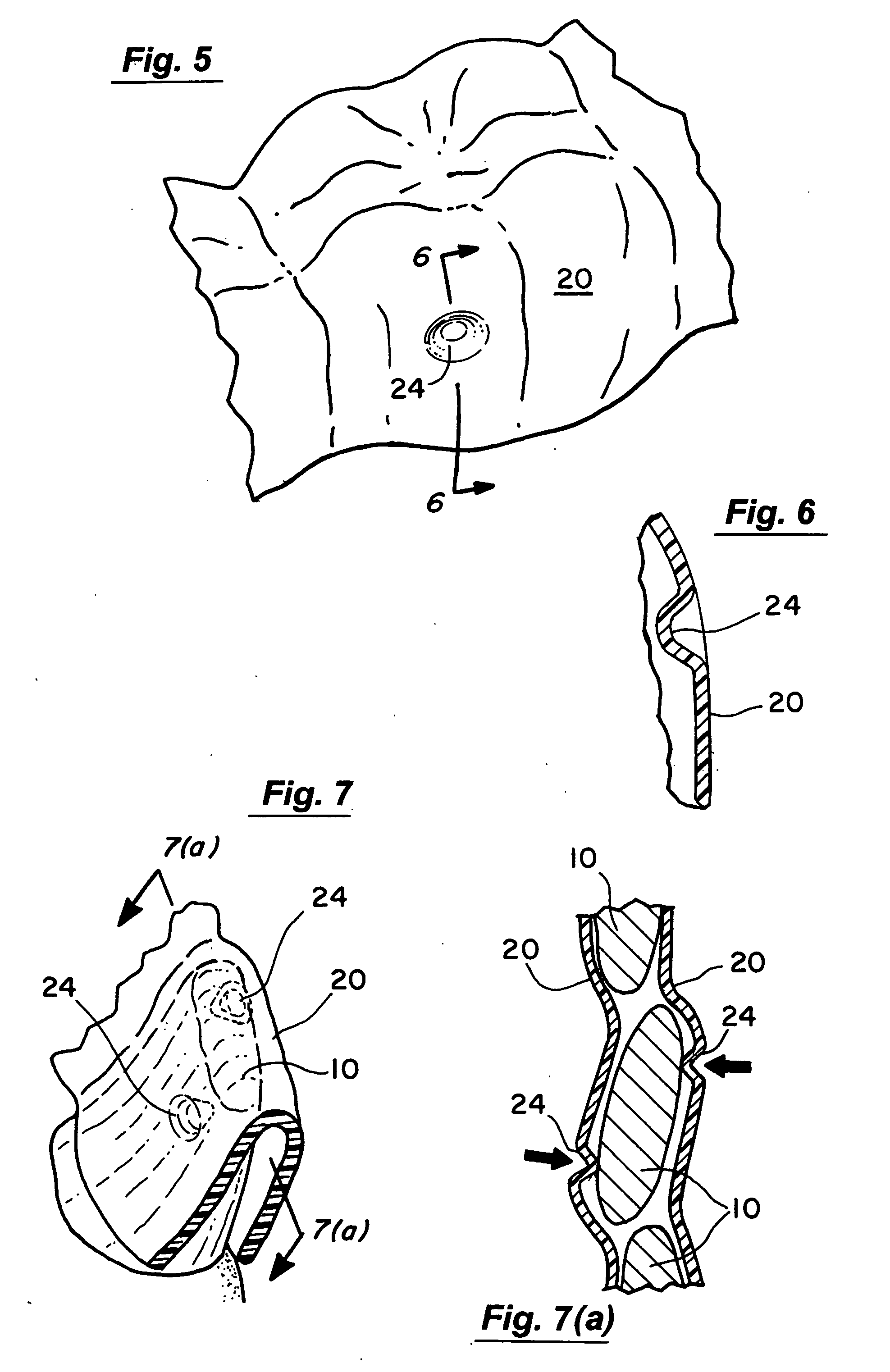Method for creating features in orthodontic aligners
a technology for orthodontic aligners and features, applied in the field of orthodontics, can solve problems such as forcible distortion of the material of slightly out of registration aligners
- Summary
- Abstract
- Description
- Claims
- Application Information
AI Technical Summary
Benefits of technology
Problems solved by technology
Method used
Image
Examples
Embodiment Construction
[0034]FIGS. 1 through 4 are perspective views illustrating the present methodology serving to form desired features in a conventional orthodontic aligner 20 made of a thin layer of thermoplastic material. FIG. 1 shows a small region 21 of the aligner 20 being heated by a very small stream of superheated air from a hot air source 30. The hot air source 30 preferably has a maximum flow rate of approximately 6 liters per minute and delivers air at a temperature in the range of approximately 400° to 500° F. For example, the Hakko 851 “SMD rework” unit marketed by Hakko Corporation of Osaka, Japan, has been found to be satisfactory for this purpose. It provides a convenient hand unit that enables a clinician to direct a small, precisely-controlled stream of heated air at a selected area 21 of the aligner 20. This unit allows adjustments over a wide ranges of temperatures and flow rates. In addition, a set of interchangeable nozzles 32 ranging from 1 to 3 mm in diameter are available.
[00...
PUM
 Login to View More
Login to View More Abstract
Description
Claims
Application Information
 Login to View More
Login to View More - R&D
- Intellectual Property
- Life Sciences
- Materials
- Tech Scout
- Unparalleled Data Quality
- Higher Quality Content
- 60% Fewer Hallucinations
Browse by: Latest US Patents, China's latest patents, Technical Efficacy Thesaurus, Application Domain, Technology Topic, Popular Technical Reports.
© 2025 PatSnap. All rights reserved.Legal|Privacy policy|Modern Slavery Act Transparency Statement|Sitemap|About US| Contact US: help@patsnap.com



